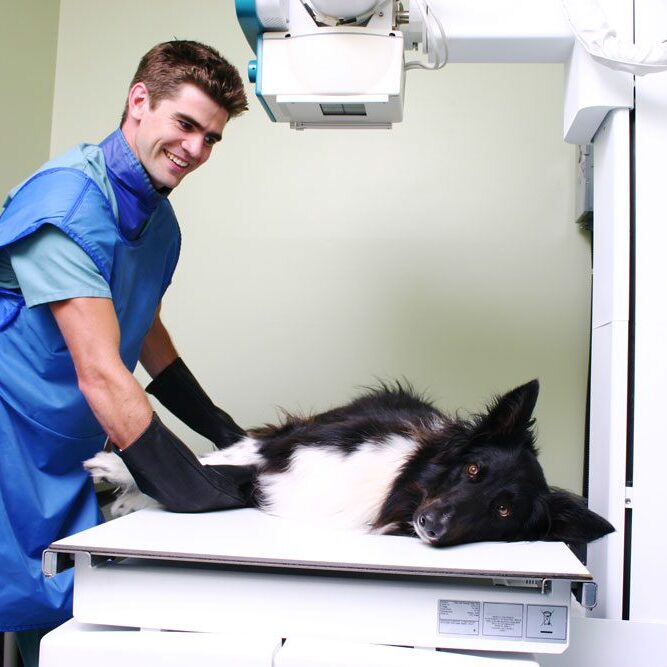Digital Radiology (X-rays)
for Dogs & Cats
X-rays (radiographs) are one of the most commonly used diagnostic tools in veterinary medicine. They allow us to evaluate bones, joints, organs, and soft tissues for signs of fractures, infections, tumors, foreign objects, or other abnormalities.
At Countryside Animal Clinic, we use digital X-ray technology, which offers several advantages over traditional film X-rays. Digital technology allows for higher-quality images for more accurate diagnoses, and also produces faster results so we can review images immediately. The digital format also allows us to easily share images with specialists if needed, fostering collaborative care to ensure your pet gets the best treatment.
Some X-ray procedures, such as orthopedic radiographs or contrast studies (which highlight specific organs or blood vessels), require your pet to remain completely still. In these cases, mild sedation or anesthesia may be needed.


Cat & Dog Ultrasound
Ultrasound is a noninvasive imaging technique that allows us to examine your pet’s internal organs and heart in real time. Using high-frequency sound waves, ultrasound provides detailed images of soft tissues, making it an essential tool for diagnosing conditions that X-rays alone might miss.
Ultrasound is particularly useful for evaluating the abdominal organs, and can help detect:
-
Tumors, cysts, or abnormal growths
-
Fluid buildup or internal bleeding
-
Organ abnormalities or disease
-
Intestinal blockages
Ultrasound is also the safest method for monitoring pregnancies and fetal health in breeding pets.
Cat & Dog Echocardiograms: Advanced Heart Imaging for Pets
An echocardiogram (or “echo”) is a specialized ultrasound of the heart that allows us to evaluate its structure and function. It helps diagnose heart murmurs, valve disease, congestive heart failure, and other cardiac conditions.
During an echocardiogram, we can assess:
-
Heart size and shape
-
Blood flow and circulation
-
The function of heart valves
-
The presence of fluid around the heart
-
Heart size and shape
-
Blood flow and circulation
-
The function of heart valves
-
The presence of fluid around the heart
If your pet has been diagnosed with a heart condition or is showing signs of heart disease—such as coughing, fatigue, difficulty breathing, or fainting—an echocardiogram can provide critical insights into their condition.


Endoscopy for Dogs & Cats
Endoscopy is a minimally invasive procedure that allows us to examine your pet’s esophagus, stomach, and intestines using a small, flexible camera. It’s an excellent tool for diagnosing and treating gastrointestinal issues without surgery.
We may recommend an endoscopic procedure if your pet is experiencing:
-
Chronic vomiting or diarrhea
-
Unexplained weight loss or appetite changes
-
Suspected ulcers or tumors
-
Foreign body ingestion (if they swallowed something they shouldn’t have!)
Endoscopy is performed under anesthesia, but since it doesn’t require surgical incisions, recovery is quick and easy. If necessary, we can also use endoscopy to retrieve foreign objects, take biopsy samples, or remove small growths.
